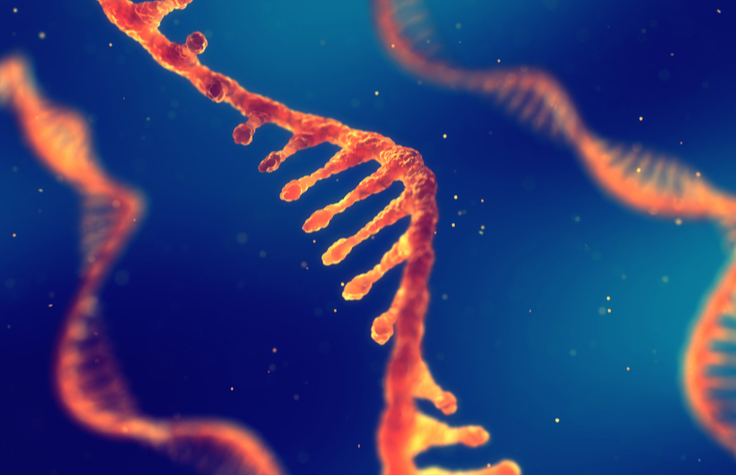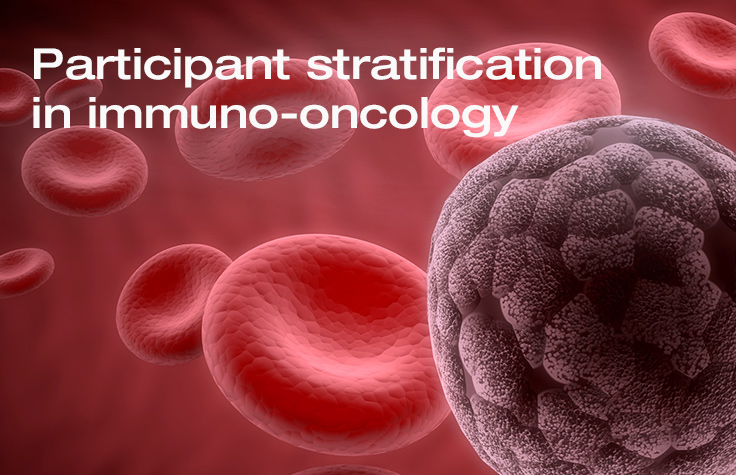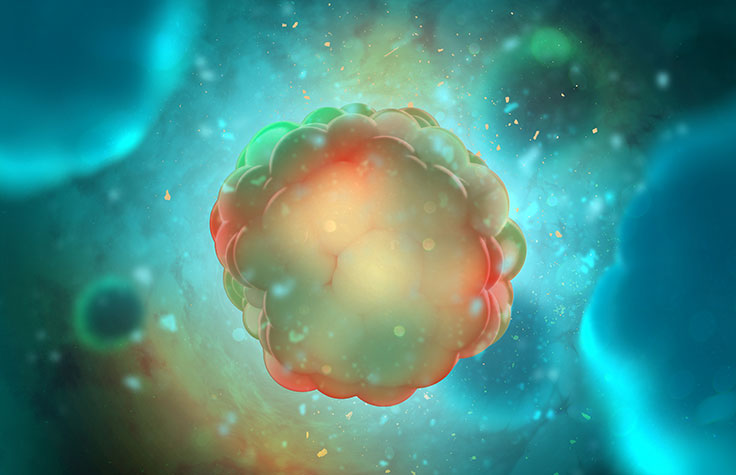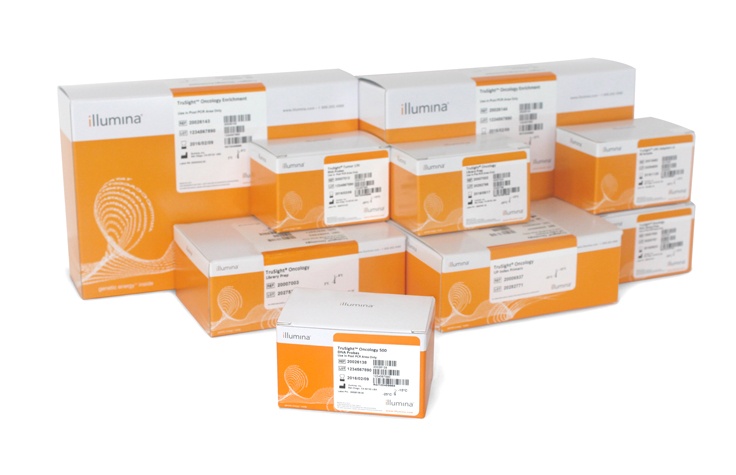Neoantigen Analysis
Assessing Tumor Immunogenicity
Next-generation sequencing (NGS) can help researchers identify neoantigens, study innovative therapies to boost the immune response, and understand how genetic variation can influence their efficacy. Characterization of expressed neoantigens has also contributed to development of vaccines and cell-based therapeutic methods.1-4
TMB Analysis with Targeted NGS
Comprehensive coverage of cancer-related variants and improved filtering algorithms enable robust analysis of tumor mutational burden as well as microsatellite instability.
Estimating Tumor Mutational Burden
While the clinical utility of tumor mutational burden is being defined, continuing efforts to standardize TMB analysis are ongoing.
Recent studies have demonstrated that tumor mutational burden can be effectively estimated using targeted sequencing panels.6-7 Specific features are recommended to enhance accuracy in TMB scoring, such as a minimum size of 1.5 Mb genomic content, and algorithms to filter variants that are unlikely to contribute to immunogenicity. 5-6
Neoantigen Identification
Mutations in protein coding genes of cancer cells are a source of potential neoantigens that the immune system can target. NGS has enabled the predictive selection of novel tumor antigens that can be applied to elicit a tumor-specific response.
DNA and/or RNA is efficiently characterized by exome sequencing and/or transcriptome sequencing. Improved bioinformatics tools aid neoantigen selection by predicting the presentation of mutant peptides for recognition by the immune system.1
Informatics Solutions for Neoantigen Discovery
Improved informatics tools enable NGS-based neoantigen prediction and tumor microenvironment research.
Research Articles
Measuring Tumor Mutational Burden

A study by Dr. Albrecht Stenzinger and his colleagues investigated the influence of gene panel size on the precision of tumor mutational burden measurement.
Read ArticleDeciphering the Role of lncRNA in Cancer

Learn why Professor Jo Vandesompele, PhD says RNA editing could be valuable in assessing tumor mutational burden and identifying neoantigens through gene expression.
Read InterviewNeoantigen Detection Workflow
Illumina offers several library preparation and sequencing options with access to data analysis options for tumor mutational load and neoantigen identification. Streamlined workflows and flexible kit configurations accommodate multiple study designs.
Approximately 90% of the world’s sequencing data are generated using Illumina sequencing by synthesis (SBS) chemistry.*
Click on the below to view products for each workflow step.
Assay targeting multiple variant types, including tumor mutational burden and microsatellite instability, even from low-quality samples.
TruSeq DNA ExomeA cost-effective library preparation and exome enrichment solution.
A low-cost solution for analyzing human RNA isolated from limited or low-quality samples, including FFPE.
TruSeq Stranded Total RNA Library Prep KitA robust, highly scalable whole-transcriptome analysis solution for a variety of species and sample types, including FFPE.
Flexible configurations that support up to 12 exomes per run.
Flexibility and scalable throughput for virtually any genome, sequencing method, and scale of project.
Explore user-friendly data analysis apps for RNA-Seq and other common methods.
This app rapidly aligns samples using Isaac and performs indel, SNV, CNV, and SV analysis and annotation.
Related Solutions
Cancer Exome Sequencing
Representing less than 2% of the genetic code, exome sequencing is a cost-effective alternative to whole-genome sequencing. It is a commonly used method for identifying neoantigens.1-3
Cancer RNA Sequencing
RNA sequencing provides not only gene expression measurement, but also information on single nucleotide variants and splicing variants.
Targeted Cancer Sequencing
For some applications, targeted sequencing panels may provide efficient assessment of tumor mutational burden.4,5
Featured Publications
Size Matters: Dissecting Key Parameters for Panel-Based Tumor Mutational Burden (TMB) Analysis.
Int J Cancer 2019;144(4):848-858
Pan-tumor genomic biomarkers for PD-1 checkpoint blockade-based immunotherapy.
Science 2018;362(6411)
Tumor mutational load predicts survival after immunotherapy across multiple cancer types.
Nat Genet. 2019 doi: 10.1038/s41588-018-0312-8.
Additional Resources

Stratifying Subjects for Immunotherapy Research
Genomics scientists discuss how NGS can help stratify subjects for clinical research.

Identifying Tumor-Specific HLA Ligands
Annika Sonntag discusses Immatics platforms for discovering and validating targets for T cell-based immunotherapy research.
Interested in receiving newsletters, case studies, and information on cancer genomics?
Sign UpReferences
- Xie N, Shen G., Gao W, Huang Z, Huang C, Fu L. Neoantigens: promising targets for cancer therapy. Sig Transduct Target Ther 8, 9 (2023). https://doi.org/10.1038/s41392-022-01270-x
- Rizvi NA, Hellmann MD, Snyder A, et al. Mutational landscape determines sensitivity to PD-1 blockade in non-small cell lung cancer. Science. 2015;348 (6230):124-128.
- Snyder A, Makarov V, Merghoub T, et al. Genetic Basis for Clinical Response to CTLA-4 Blockade in Melanoma. N Engl J Med. 2014;371(23):2189-2199.
- Allen EM, Miao D, Schilling B, Shukla SA, Blank C, Zimmer L. Genomic correlates of response to CTLA-4 blockade in metastatic melanoma. Science. 2015;350(6257):207-211.
- Garofalo A, Sholl L, Reardon B, et al. The impact of tumor profiling approaches and genomic data strategies for cancer precision medicine. Genome Med. 2016;8(1):79. doi:10.1186/s13073-016-0333-9.
- Buchhalter I, Rempel E, Endris V, et al. Size Matters: Dissecting Key Parameters for Panel-Based Tumor Mutational Burden (TMB) Analysis. Int J Cancer. 2018. doi: 10.1002/ijc.31878.
- Chalmers ZR, Connelly CF, Fabrizio D, et al. Analysis of 100,000 human cancer genomes reveals the landscape of tumor mutational burden. Genome Med. 2017;9(1):34. doi: 10.1186/s13073-017-0424-2.
*Data calculations on file, Illumina, Inc, 2017.
